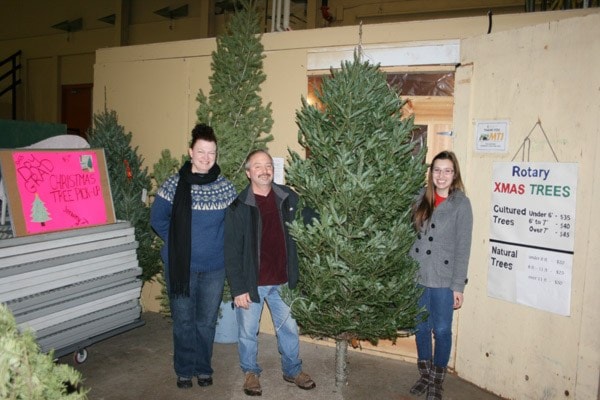The Castlegar Rotary Club’s Christmas trees have arrived! Both cultured and natural trees are available for sale at the Castlegar Community Complex. Prices start at $20 for natural trees, and $35 for cultured trees.
Hours of operation are noon to 6 p.m. on weekdays, 10 a.m. to 7 p.m. on Saturdays, and 10 a.m. to 6 p.m. on Sundays.
To keep your tree fresh, cut two inches off the bottom before putting it into the stand. This will help your tree absorb water. Water your tree daily, and keep it away from heat sources such as radiators or fireplaces. Make sure to unplug your Christmas tree lights when leaving the house or before going to bed.
Proceeds from the Christmas tree sales benefit local and international projects.
All about Christmas Trees
• The use of evergreen trees to celebrate the winter season occurred before the birth of Christ.
• The first printed reference to Christmas trees appeared in Germany in 1531.
• Two to three seedlings are planted for every harvested Christmas tree.
• 98 per cent of all Christmas trees are grown on farms.
• 77 million Christmas trees are planted each year.
• Christmas trees generally take six to eight years to mature.
• Using small candles to light a Christmas tree dates back to the middle of the 17th century.
• Thomas Edison’s assistant, Edward Johnson, came up with the idea of electric lights for Christmas trees in 1882.
• Christmas tree lights were first mass produced in 1890.
• The best selling trees are Scotch Pine, Douglas Fir, Fraser Fir, Balsam Fir, and White Pine.
• Other types of trees such as cherry and hawthorns were used as Christmas trees in the past.
• Christmas trees remove dust and pollen from the air.
• An acre of Christmas trees provides for the daily oxygen requirements of 18 people.
• Artificial trees will last for six years in your home, but for centuries in a landfill.
• The tallest living Christmas tree is believed to be the 122-foot, 91-year-old Douglas fir. This coniferous colossus is located in the town of Woodinville, Washington.
Source: Christmas Trees & More, http://urbanext.illinois.edu/trees/facts.cfm
